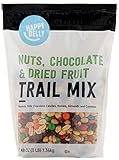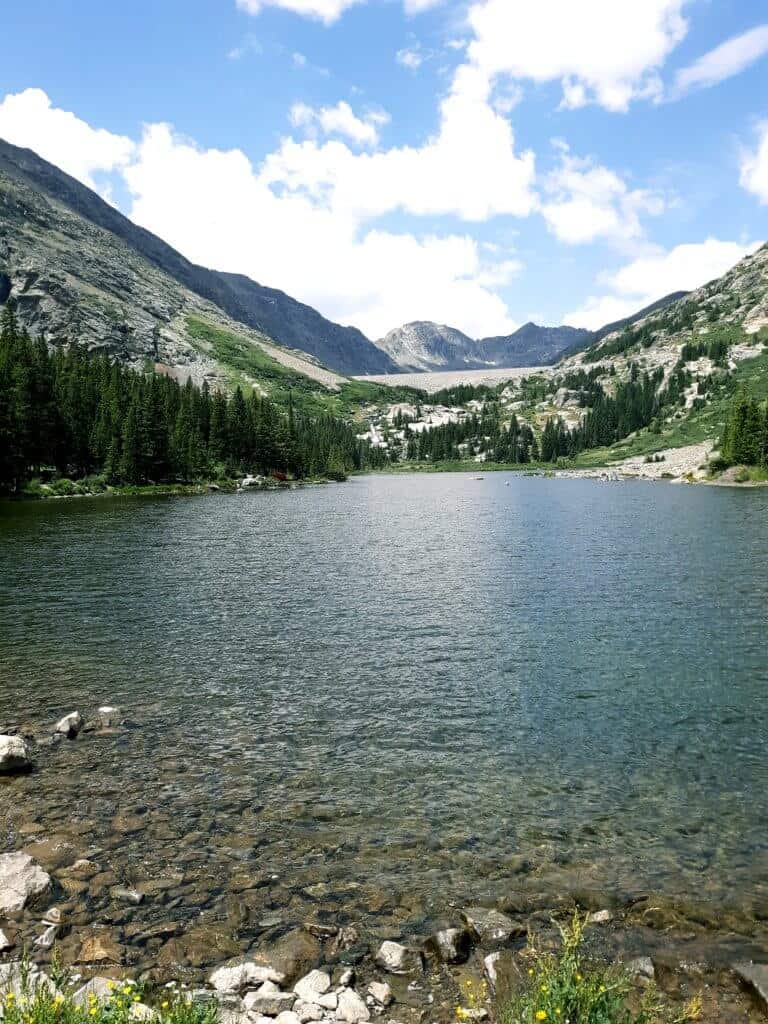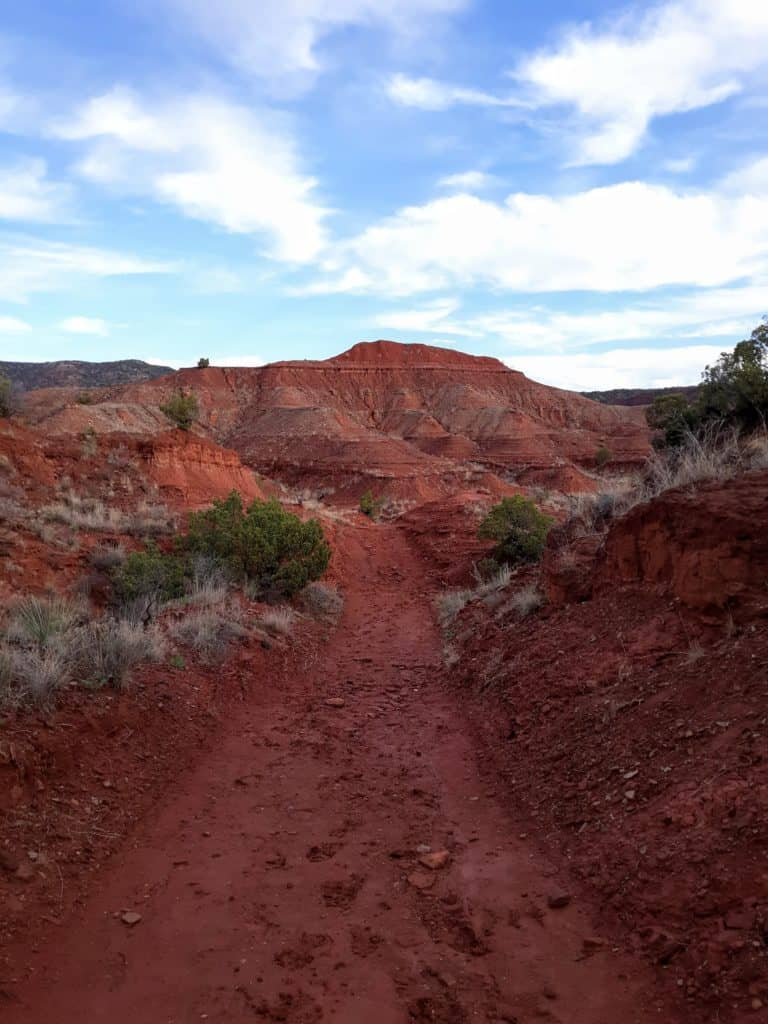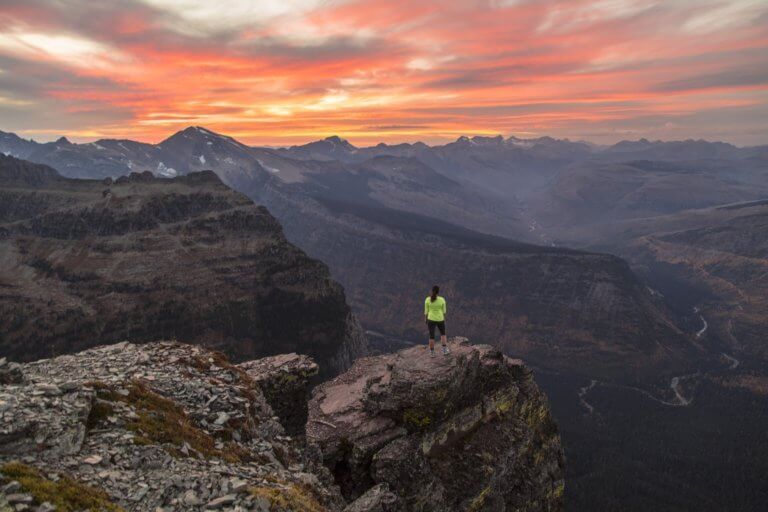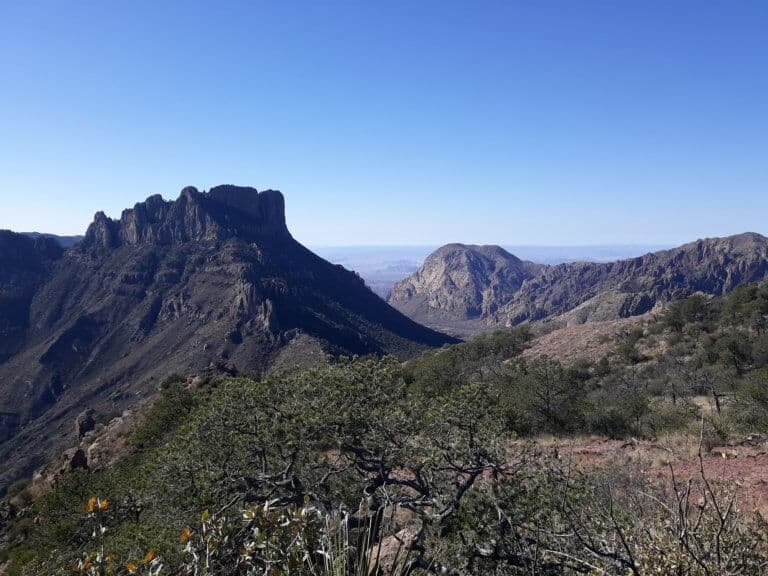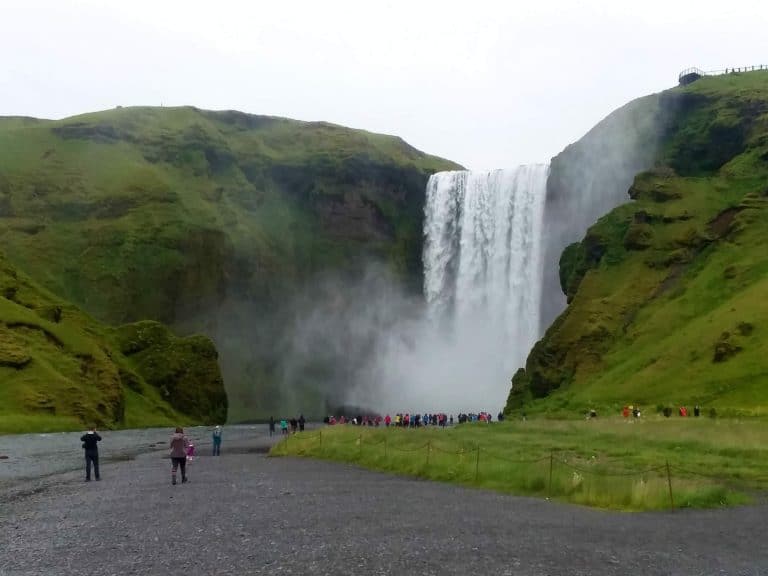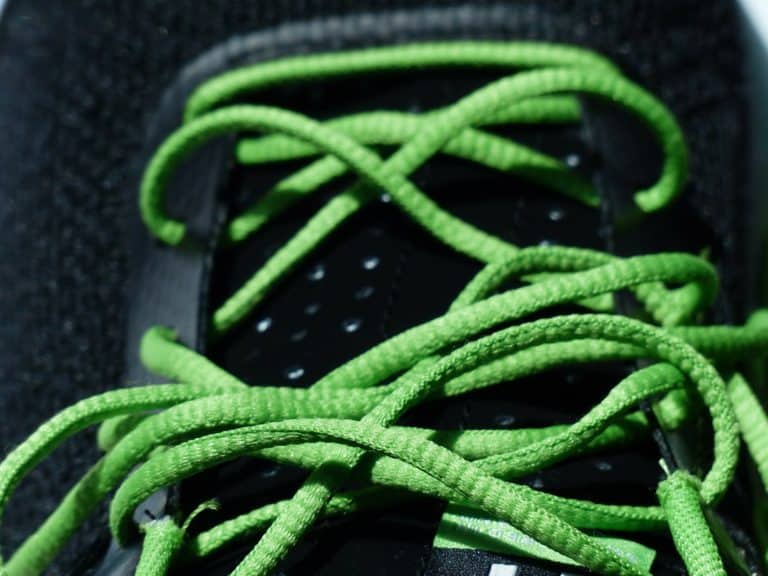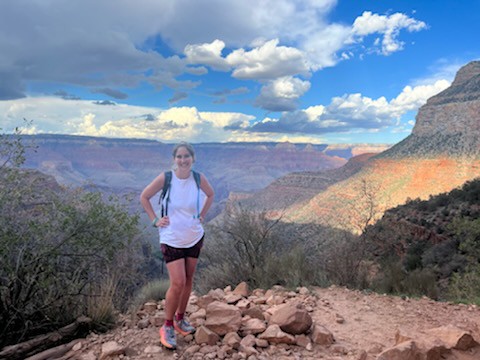The Only Hiking Checklist You Will Ever Need: The 10 Essentials Plus
There are two ways to develop a foolproof hiking checklist: from a series of carefully planned and successfully executed hiking experiences with all the requirements of essential hiking gear that you have been instructed to carry, OR, from a botched hiking outing that went nothing as planned, and you learned the hard way just how important hiking essentials are! I can say I have stood on both sides of this line, but it was the latter, a night spent lost and alone in Utah’s Uintas mountains, that really made the importance of a well executed hiking gear list stand out! Once you have seen first hand the benefits that a well executed hiking checklist can provide you in an hour of need, you will fully understand what all the hype over the right trekking gear is all about! In this post, you will find the only hiking checklist you will ever need, from the 10 hiking essentials, to the best out there in trekking gear and essential hiking gear!
***Note: this is a post dedicated to day hiking – for a complete list of all essential backpacking gear for overnights or multi day treks, check out my backpacking essentials sister post here!
Disclosure: Below are some affiliate links-these are all products I highly recommend. I won’t make any recommendations on this page that I haven’t tested or personally used!
The 10 Categories of Hiking Essentials on Your Hiking Checklist
It is misleading to think of the “essential 10” as just 10 individual items on your hiking gear list. I prefer to think of them more as 10 categories, into which multiple items fall. Some of these hiking gear list items may leave you wondering “when would I ever actually need to use that?”, but trust me, when that time ever comes, you will be glad you packed those essential items of trekking gear.
There is nothing worse than learning that lesson the hard way. I can speak to that point from experience. We all start from somewhere and everyone is a beginner hiker at some point, learning how to hike safely and what sneaky hiking mistakes to avoid, and, just as importantly, what essential hiking gear to pack!
A good hiking essentials checklist (sneak peak – here’s my downloadable day hiking essentials checklist up for grabs HERE!) and hiking gear list should exist to perform two simultaneous and dual functions. Primarily, it should allow you to have an enjoyable and comfortable hike, fully prepared for the best the trail has in store for you! It should allow you to function at your best as a hiker!
And secondly, it should exist to protect you, and in the worst scenario, get you through whatever unexpected surprises the trail may throw at you! That being said, each of these 10 categories on your hiking checklist are important in a worst case scenario. It is impossible for me to list them “in order of importance”, because you never know what unknown factors a hike can throw your way, and you simply have to be prepared for all of them with each piece on your essential hiking gear list.
Below you will find quick links to all the recommended items you should have on your hiking checklist. Keep reading to take a deeper dive into each of these categories.
Day Hiking Checklist Quick Links:
- Trail Runners: HOKA One One Speedgoats
- Hiking Boots: Vasque Breeze
- Breathable mesh upper with seamless synthetic overlays
- The breeze Lite low Gore-Tex is a streamlined hiking shoe for fast and light Trail adventures. Save on weight, while taking full advantage of best-in-class traction and waterproofing
- Socks: Hilly Twin Skin socks
- Hilly Women's Twin Skin Anket, Magenta/Grey Marl, Medium
- Water Hydration System:
- Premium taste-free, leak-proof reservoir with fast flow rate offers hydration on the go for hikers, backpackers, travelers and mountain bikers
- ADVANCED WATER FILTRATION. Protects against, microplastics, chlorine, organic chemical matter and sand, dirt, cloudiness and more; improves taste
- This official LifeStraw personal water filter will provide 792 gallons (3,000 liters) of safe drinking water without using chemicals, iodine
- One Bottle Of 50 Potable Aqua Water Purification Tablets And One Bottle Of 50 Potable Aqua Pa Plus Tables
- Daypack: Camelbak Helena 20 Liter Daypack
(Make sure you have plenty of carabiners attached to your daypack also)
- Breathable Air Mesh: For lightweight comfort and air flow.
- Environmental Protection:
-
- Hat or Visor
- Snacks:
-
- Sandwich
- Beef Jerky
- Trail Mix / Nuts
- Tuna Packets
- Applesauce Pouches
- Squeezable Peanut Butter
- Honey Stinger Waffles
- GU Energy Gels
- Banana
- Carrots
- RX Bars
- NUUN Tablets / Electrolytes
- Emergency/First Aid Kit:
- The Right Layers:
- Navigation:
- Brand-Oriented & Outdoor Charger Pro: With over ten years of experience in solar power banks, BLAVOR has already gained the favor and trust of millions of global users. BLAVOR only uses the highest-grade materials, to provide the most reliable and safe products to customers.
- Small, rugged, lightweight satellite communicator enables 2 way text messaging using the 100% global Iridium network (satellite subscription required)
Emergency Shelter:
(Another option is a SOL Bivy for emergency shelter)
- Personal Items:
- Fire

***Want this checklist as a handy download?
Get your own printable day hiking checklist here!
The 10 Categories of Your Hiking Checklist
So what exactly are the big 10 hiking essentials categories? They are:
- Backpack
- Hydration System
- Environmental Protection
- Navigation
- Shelter
- Clothing
- Emergency Medical
- Fix It Tools
- Fire
- Food
BONUS! I like to include an eleventh category, because some things on any good hiking checklist are intangible, but vital!
11. Preparation and Planning
Hiking Essentials #1: Backpack
The start of any hiking checklist and hiking gear list has to be the home for your essential hiking gear while you are out on the trail! For a true extended backpacking trip, you will want to look into a larger pack that can carry more overnight essentials, but for day hiking, a pack around 20 liters should suffice.
I prefer the Camelbak Helena 20 liter daypack, for its capacity to fit all your day trekking gear. It is hydration bladder equipped and comes with a 2 liter bladder included, although I prefer to hike with a 3 liter hydration bladder like this Platypus model on Amazon), which is a must for me!
How you plan to transport water brings us to category number two: hydration.
Hiking Essentials #2: Hydration System
Hydration systems come in minimalist forms all the way to heavy duty versions!
- One of the more minimalist versions are these gadgets called Lifestraws that allow you to drink straight from a natural water source. They are a great “emergency backup” form of hydration for hikes that have water sources. They can serve as a very lightweight, compact option for minimalist packers.
The drawback is that they require you to stop every time you need to take a drink, and you absolutely must have a viable water source from which to drink from. Basically, if you are hiking in an arid environment, a LifeStraw should never be your primary planned hydration system. My personal recommendation is that if you are going to use a LifeStraw, use it as a backup system.
- Other minimalist filtration options include water purification tablets. You can fill up your water bottle or hydration bladder straight from a water source, drop the tablets in, and let them do their magic! Again, not the optimal route to go in an arid environment. You need to have a viable, active, water source. Some people will also be able to detect a slightly unnatural taste sometimes associated with these tablets. But they are a great ultra-lightweight, compact, easy to pack item, which is a key characteristic for me for any item on my hiking gear list.
- Depending on the length of your hike, a traditional water bottle might serve you well. However, as the point of this is to help prepare you for the possibility of a worst case scenario, I recommend that if a water bottle is going to be your primary hydration system, plan to also have a backup.
Also, make sure that your chosen water bottle is sturdy, such as this Nalgene model you can find here on Amazon. Or, if you do not want to necessarily be limited by the capacity of a traditional water bottle, you can choose to invest in one such as this Lifestraw equipped bottle, which has the Lifestraw built in, so that you can fill up your water bottle from any water source and keep on trekking! It makes for a great backup water hydration system to a water bladder. An soft sided alternative to the Lifestraw water bottle is the Katadyn BeFree. Like the Lifestraw water bottle, it has a built in filter for quick filling and on the go hydration with immediate filtration. The nice thing about the Katadyn BeFree is it is collapsible and takes up less volume than a Lifestraw water bottle.
- Finally, my personal go to and the system I personally think is the most foolproof, is a hydration bladder system. I use Platypus hydration bladders for all my long distance day and overnight hikes. I like the ease of being able to hydrate while continuing to keep on moving. I also feel that 3 liters of water is sufficient for nearly every day hike most will come across, which is why I prefer this 3 liter Platypus water hydration bladder myself.
That being said, I still utilize a back up plan along with my Platypus bladder. I also bring along my LifeStraw water bottle, Katadyn BeFree, or just the LifeStraw itself.
All of the hydration systems mentioned here can be found below with their most current price listed on Amazon:
- Lifestraw
- Want a specialized case to carry your Lifestraw in? Find one here on Amazon!
Hiking Essentials #3: Environmental Protection
The elements in the environment can be one of those subtle factors that do not immediately jump out at us, but can be so crucial to our comfort when hiking! If you read any of my other posts, particularly those that involve high altitude hikes such as Guadalupe Peak in Texas, Humphrey’s Peak in Arizona, King’s Peak in Utah, Wheeler Peak in New Mexico, or any other of the state high point hikes I have done so far, I am not ashamed to say that:
- Chapstick is one of the most important things I value on my hiking checklist! There is nothing more miserable to me than a day filled with chapped lips.
- The second most annoying thing to have to endure is hours of annoying pests. Some hikes will contain more bugs than others, but it is always best to be prepared to ward off whatever amount you may encounter with some bug spray.
- Sun protection holds an important spot on the hiking gear list! A sunburn can turn a pleasurable trek into a torturous, cringe inducing drag. An effective sunscreen with high SPF, especially for those high altitude or full sun, low shade hikes, is an important piece in any hiking gear list. Bonus if your sunscreen is sweat proof!
- Couple that with sunglasses and a hat, and you will be completely covered. Polarized sunglasses can also come in handy not only in the sun, but on snowy hikes as well, in helping to deal with the reflection off of the snow and subsequent glare.
- I like to think of darkness as an environmental element that any responsible hiker needs to be prepared for. It might not be something you are planning to encounter, as you depart for your intended day hike, but in a worst case scenario, it could make all the difference. I believe a headlamp is the most efficient form of shedding some light, as it allows your hands to remain free. My favorite headlamp is this Biolite no bounce headlamp, which is perfect for both hikers and trail runners!
All of the environmental protection hiking gear list items mentioned here can be found below with their most current price listed on Amazon:
- Chapstick
- Bug Spray
- Bear Spray (if necessary)
- Sweat Proof Sunscreen
- Polarized Sunglasses
- Hat or Visor
- Headlamp
Hiking Essentials #4: Navigation:
Navigation is two-fold. You need to possess it, but also know how to use it. In this age of technology, there is an ever growing and ever evolving market of devices and navigation systems designed to keep you on your trail. When utilized properly, they are incredibly effective at lowering your odds of ever having to spend a unplanned overnight on the trail!
- MyTopo is a website where you can create customized topographic maps to bring along with you on your hike, whether that is a day hike, backpacking hike, or multi-day hike! This is a great tool, though it does require the user to become familiar with how to read it. Check out this handy video for an introductory tutorial on how to read a topographic map!
- Another potentially life-saving hiking gear list item that also requires some user homework, is a compass. This is such a great, traditional, tool to possess, but it is much less effective if you do not actually know how to use it! Check out this short video tutorial on how to learn compass reading skills!
- There are many apps available in which you can now download and track trails and locations. My preferred phone app is through AllTrails. There are differing levels of subscription plans, but the basic one is free, and allows you to download and track your location on a trail, within cell coverage. The paid plan allows you to partake in these offerings, but includes the ability to track outside of cell coverage. Visit the AllTrails website for more information on the different subscription plans.
- The most high-tech option on this hiking gear list is a Spot Gen 3, a personal emergency locator beacon. There are several models out there, including similar Garmin models as well. These are great life-saving devices should you ever need it. They do require a yearly subscription, but when acquired, the user can send out an emergency notification with location in an emergency, making rescue much quicker. You can also send notifications to family and friends of location and designated “check in” spots.
- All of the pieces of technology listed in this category will become useless if they lose charge. Whether you plan to use the AllTrails app on your phone, or need to send for help on your Spot Gen 3, it is a good idea to bring a portable battery, fully charged, to ensure an extended lifespan on any technology you plan to use. There are even solar powered portable batteries available these days!
Compass, Spot Gen 3 device, and portable battery can all be found on Amazon with their current prices listed below:
- Topo Maps – I get mine from MyTopo!
- Compass
- All Trails App
- Spot Gen 3
- Solar Powered Portable battery (fully charged!)
Hiking Essentials #5: Shelter
When I was lost for twenty two hours in the remote northern Utah wilderness, alone and overnight, my lack of planning for emergency shelter was one of my biggest regrets. This can prove true for any unfortunate hiker, especially in an environment with less than cooperative elements. Since you can’t predict what nature intends to do, be prepared to have a way to get out of it!
- An emergency tarp or tent is a simple, basic way to provide shelter and protection from the elements. Something that is weatherproof, plus easy and quick to set up is a plus. Couple that with an emergency blanket for warmth.
One of the newer and creative lines of survival brands is SOL. They sell items referred to as emergency survival bivys, which basically serve as an almost sleeping bag type of shelter, but amped up, with waterproof and windproof capabilities! Think shelter that you can zip up and hunker down inside of. Unbeatable peace of mind from this item on the hiking gear list!
Or, just get their entire SOL survival kit, which includes emergency items such as firestarters, compass, combination knife, signaling mirror, and more!
- Always bring an emergency blanket (or survival bivy) and emergency tarp. Both of these items are lightweight, compact, and easy to fit into your pack. If you can spare the room and the weight, try out a survival bivy as well. A night spent alone on the trail will be much more survivable with these items on your hiking essentials checklist.
All of the shelter hiking gear list items mentioned here can be found below with their most current price listed on Amazon:
Hiking Essentials #6: Clothing
Layers, layers, layers. If I could preach one thing about the most effective hiking clothing, it would be layers. That, and avoid cotton at all cost! Cotton is the least conducive conductor of heat and moisture, and will simply weigh you down when you get sweaty.
A basic tutorial on layers for hiking, or active travel of any kind for that matter, can be broken down into three things: a base layer, mid-layer, and outer shell layer.
Top Layers
- A rule of thumb for your base and mid layers is to keep it moisture wicking and breathable above all else! I use IceBreaker’s brand of base layers for long and short sleeve shirts. They are great at keeping me feeling dry and ventilated.
- For a mid-layer, think moisture wicking and breathable, but with an added touch of warmth. I prefer wool for all my mid-layers, and my go to brand for wool layers is IceBreaker.
- Finally, you need an outer shell layer to protect against the elements, most notably wind and precipitation. Your outer layer could be a hard or soft shell. Hard shells are more traditional, but recently soft shells have upped their game and are becoming even more effective at blocking the elements.
For outer layer shell tops, my go to is Outdoor Research’s Helium II jacket. This fully waterproof outer shell is literally the most lightweight option out there for compactible, fully waterproof options. Perfect for when you need to be mindful of the elements, but also of weight and space!
Bottom Layers
- Bottom layers on legs can look a little different. In some cases, you may not need a mid-layer, as the legs are naturally a hub of energy and warmth due to the constant movement. I wear Columbia Anytime hiking pants, which protect against light precipitation and light wind, with a wool leggings layer from IceBreaker underneath as needed.
If you are planning to hike across Death Valley National Park in the middle of summer, I may understand your argument about bringing a bunch of layers. But even so, plan to at least bring an outer layer to protect against the elements and shield yourself if needed. If you are looking for a hiking short for those warmer temps, I recommend Columbia’s Sandy River hiking shorts. Or these anti-chafing shorts with handy pockets!
Layering extends to the extremities as well. It is vital that you take care of your feet, hands, and head, especially when expecting colder weather. You may start off a hike in the 80’s but you would be surprised how many of these environments can dip down into the 30’s or 40’s once the sun is down. I recently experienced this while hiking the Widforss Trail on the North Rim of the Grand Canyon, a unique environment that swings in temperatures every day, even in the summer. Do not be caught off guard.
- The most reputable brand of wool hiking socks is Darn Tough. The Darn Tough brand makes breathable wool socks for hiking, running, and I imagine just lounging in as well. There are plenty of colorful and unique options to choose from to add to your hiking checklist. If you are blister prone, you might want to also check out Hilly Twin Skin Socks! I used to be extremely blister prone myself, but the “twin skin” helps to counteract the friction that can cause blisters. Haven’t had one since using Hilly Twin Skin socks, not even on the 24 mile long Rim to Rim hike in the Grand Canyon!
- A hat or head covering has already been mentioned previously in reference to sun protection, but it is important to consider that you may need a different type of hat depending on the environment of your hike. In colder anticipated temperatures, it is beneficial to have a warmth-capturing layer for your head, such as this Smartwool wool beanie that I utilized as a head layer during my arctic runcation in Greenland! Or, check out one of my favorite hiking accessories of all time, the versatile Buff!
- Gloves are an additional piece of safety for your hiking checklist, especially in those certain types of environments and temperatures. It goes without saying that a lot of planning for your hiking checklist takes into account doing your due diligence and research. Look at what the average temperatures are day and night, and determine if gloves might be a necessity in an emergency situation. In order to stay safe than sorry, I use gloves that are also waterproof, as that may be crucial in an emergency.
That goes for other items as well. But if you think you might need them, then bring them. Gloves can keep your hands more efficient and effectively working in an emergency situation. For optimal efficiency, go with a glove that allows for touchscreen capabilities, and one that is insulated for warmth, like these Black Diamond waterproof gloves.
Insider Tip: Maybe you already know that your hiking is going to take you into some extreme cold temperatures – get the right extreme cold weather clothing and gear to outlast the chill!
- Finally, footwear is a big item to invest in for any collection of trekking gear. I spend a good chunk of my hiking budget money on investing in good hiking footwear, as I feel that this is not an area to cut corners or spare expense.
For flatter, lower grade hikes, I find that many can be done in trail running shoes, like the HOKA One One Speedgoats that I hike and run trail races in. The downside to these is that they are not waterproof, which can throw a wrench in things if you unexpectedly find yourself encountering unplanned precipitation. But they are superbly cushioned, lighter and quicker moving than traditional hiking boots, and still have exceptional grip.
Most of the sketchier or more technical hiking I do, I do in my Vasque Breeze GTX III’s. These are a traditional hiking boot, and they come with the ankle support, traction and grip, and waterproof capabilities that come with such. I have made it to the top of scree fields, boulder hopped at 13,000 feet, and descended from sketchy state high point trails in these, and they perform wonderfully.
Below are my favorite clothing items in each sub-category, found with their current price on Amazon:
- Layers
- Base layers
- Base layer tops
- Mid layer tops
- Outer shell layer tops
- Base layer bottoms
- Outer shell layer bottoms
- Warm Weather Hiking Shorts
- Base layers
- Socks
- Hat
- Gloves
- Footwear
Hiking Essentials #7: Emergency Medical
- Medical emergencies need to be planned for in the back of any hiker’s mind before heading out down the trail. The best way to go about this is to purchase and carry an in depth, comprehensive first aid kit, with a full range of capabilities.
- Secondary systems of pain management include aspirin, blister protection, and anti chafing balm. These hiking gear list items will ensure that you can keep moving.
- Anti itch creams and antihistamine medication are useful to bring along on your hiking checklist for any unexpected encounters with possible irritants on the trail.
- If you ever find yourself in a debilitating situation on the trail, especially one in which you are no longer mobile, it will become imperative that you have other methods of drawing attention to yourself. One way to do this is to carry a whistle with you. A whistle can carry much further than a voice can, especially if that voice may be injured.
- Another way to accomplish this is with a signaling mirror, which can be used for longer ranges. Both a whistle and signaling mirror are small, easy to pack, and compact to carry items of essential hiking gear. There is really no reason not to bring along both items so that you have multiple ways to signal for help in an emergency.
- This will not be necessary in all hiking environments, but if your research ahead of time points to the possibility of encountering bears, than go prepared with bear spray. You can always contact your local rangers to help determine how necessary this item may be for your planned outing.
- We all know what it is like to stop and go to the bathroom along the trail. For simple clean up purposes, I find wipes a much more compact and user friendly item versus bulkier toilet paper rolls. Just bring along a ziploc bag or something similar to be able to pack it out!
- Hand warmers may come in very useful, especially on colder trails. If you find yourself stuck, immobile, or in a situation where you are not actively moving to keep warm, hand warmers could give you that little extra boost to stay warm and functional. And I am a big fan of items that are compact, lightweight, and easier to pack. There is really no reason not to include essential hiking gear items like these on your hiking checklist.
All of these items of essential hiking gear can be found with their current price listed on Amazon:
- First Aid kit
- Aspirin
- Blister protection – blister bandages and blister balm
- Anti-itch cream
- Antihistamines
- Anti Chafing Balm
- Emergency Whistle
- Signaling Mirror
- Bear Spray
- Wipes
- Hand warmers (if necessary)
Hiking Essentials #8: Fix It’s
Things happen on the trail unexpectedly, and it is imperative to have the right tools to be able to fix things sufficiently enough to keep on moving.
- A good multi tool, with multiple fix it functions, can get you out of a myriad of different types of binds. I recommend splurging on a multi tool with a few extra “extras”. Again, odds are you may not have a need to ever use all of them, but they will be good to have when you have to have them.
- Duct tape is an oldie but goodie when it comes to essential hiking gear. You never know what you can temporarily repair and patch with a good role of duct tape. There have even been advancements in what I like to refer to as specialty types of repair tapes, specifically made for hiking and trekking gear.
- One such advanced form of tape available on the market now is called Gear Aid Tenacious Tape. This repair tape sticks to almost all trekking gear surfaces, and its waterproof. Think of it as duct tape made just for your hiking essentials.
- A good length of cord can prove to be a very useful item of essential hiking gear in a bind. You never know what you may need to tie down or tie up in a scramble.
- An all purpose knife may come included in whatever type of multi tool you invest in. If not, be sure to have a separate all purpose knife in addition for your hiking checklist.
All of the fix it items of essential hiking gear listed below can be found on Amazon with their current prices:
- Multi Tool
- Duct Tape ( or if you want the specialty version, Gear Aid Tenacious Tape! )
- Cord
- All purpose knife
Hiking Essentials #9: Fire
No matter what your purpose in making fire is, whether for enjoyment or necessity to survive, these are the basics you can count on to help start fire from scratch. A lighter, fire starter device, fire starter squares, and a match kit can work in conjunction to start any fire. It is up to you how much assistance you want in getting your fire started. In less than cooperative environments and weather, it is helpful to have them all!
If you want to stay minimalist with your fire starter and cut down on costs, you can even bring fire starters from around the house! Cotton balls dipped in Vaseline, stored in a small container, can work effectively in giving your kindling life.
These fire creating items of essential hiking gear can be found on Amazon:
Hiking Essentials #10: Food
When hiking, the best types of foods to bring along are high energy, easily digestible, complex carbohydrates. Instead of a quick rush, think of foods that will give you lasting energy. Opt for choices of proteins and healthy fats to aid in slow energy release to sustain throughout the day. Some of my favorites are listed below. I am a big fan of lightweight, compact-able, and easy to fit foods.
- Dried Fruit
- Tuna packets
- Beef jerky
- Nuts
- Trail Mix
- Squeezable Peanut Butter
- Carrots
- RX Bars
- GU packets
- NUUN tablets
- Applesauce Packets
- Sandwiches
- Dehydrated Hiking/Camping Food
BONUS Hiking Essentials #11: Preparation and Planning
This eleventh category is your bonus round for your hiking checklist! It is all of the intangible information that you carry with you, and the preparations that you leave in your wake.
- #1: Be as knowledgeable as possible about your trail. Do not just order a topographic map or download AllTrails, actually break them out and study them ahead of time. Read the reviews, check the weather, look at pictures, become familiar with the pitfalls and challenging spots. Know exactly how many switchbacks there are, how many water crossings to expect, what type of wildlife is typical. Become as intimately acquainted with your trail as you can ahead of time.
- #2: Notify someone of where you are going and what your plans are. Let someone know when you are expected to be off the trail. Leave a detailed itinerary with a trusted friend or family member. Put a piece of paper in the glove compartment or in the console of your car, with your name and instructions for when you are expected to be off the trail. If something goes wrong and someone is trying to locate you, they will be able to find that piece of paper. Just be sure your information is not visible to passer-byers with the wrong intentions. Be discrete.
- #3: When you are hiking, keep a level head. If something goes wrong, keep calm and do not panic. Think logically through your situation, and determine what you can do to better your chances of getting help. Do not act out of fear or in rushed panic.
- #4: Throughout your hike, one of the best things you can do is pay close attention. As you are walking, take in your surroundings, and frequently look behind you. This will help to orient you, and also could help you locate familiar waypoints on your way back out. Go so far as to take pictures of landmarks, so you can reference them later if needed.
It is tempting to hike with earbuds sometimes, but my advice is to keep them out. Instead, be listening for what is going on around you. You do not want to miss out on potential dangers, or equally potential pleasant surprises, along the trail. Hike with all of your senses fully engaged.
Not only that, but if there are other hikers in peril along the trail or out in the wilderness, you may be the only person that can hear them. Someone else may be relying on you, and you need to be aware.
Remember, in addition to your trekking gear, bring these along as well!
- Knowledge of Your Trail
- Notifications
- Level Head
- Close Attention
So there you have it, all of the essential hiking gear for a complete hiking checklist that you will ever need!
***Want this Day Hiking Checklist as a Handy PDF?
Last update on 2023-08-09 / Affiliate links / Images from Amazon Product Advertising API















